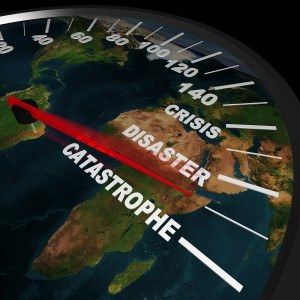 Insured loss estimates from major natural catastrophes totaled $39.5 billion during 2016, which is the highest level since 2012 when market losses totaled $60 billion, according to a report published by Willis Re, the reinsurance division of Willis Towers Watson.
Insured loss estimates from major natural catastrophes totaled $39.5 billion during 2016, which is the highest level since 2012 when market losses totaled $60 billion, according to a report published by Willis Re, the reinsurance division of Willis Towers Watson.
Willis Re determined that the insured losses for 2016 reversed the trend in loss reductions seen from 2011 to 2015, when insured losses fell significantly from $120 billion to $23 billion. The report – “Willis Re Summary of Natural Cat Events 2016” – reviews the economic and insured losses from what it determines are the most relevant natural catastrophe events; the losses detailed in the report do not include man-made disasters.
“The economic losses have been much higher than the insured losses, which show low insurance penetration in the selected regions affected by the catastrophes,” added the report, which confirmed that 10,000 casualties were reported during 2016.
Willis Re’s findings mirror trends identified by others in the industry. A Munich Re report released in January also determined that global natural catastrophe losses had reached their highest level in four years in 2016, with much of the trouble coming from North American storms and other weather events. Munich Re estimated $50 billion in insured losses for 2016 in this area. Similarly, a January report from ISO/Verisk Analytics and the Property Casualty Insurers Association of America noted a large hike in losses from private U.S. property/casualty insurers during the first nine months of 2016.
Willis Re’s report concludes that the largest single insured loss came from the Kumamoto earthquake in Japan in April 2016, with losses exceeding $4.8 billion.
Other major events during 2016 included:
- Canada’s Fort McMurray wildfires in May caused insured losses of around $3.5 billion.
- Hurricane Matthew in early October resulted in the largest single insured loss in the United States at $2.3 billion.
- The combined effects of Windstorms Elvira and Friedrike in Europe in the summer produced losses of approximately $2.48 billion.
“As our report shows, despite natural catastrophe insured losses falling in the last five years to 2016, they are still significant, and lower-profile perils such as the wildfire around Fort McMurray have the potential to cause substantial losses,” said John E. Alarcon, executive director, Catastrophe Analytics, Willis Re International.
“Importantly, our report also highlights that economic losses continue to be higher than insured losses and substantially so in some regions. Clearly, the insurance industry has a significant role to play in helping economic recovery by supporting resilient societies and closing the protection gap between insured and total economic loss when natural catastrophes occur,” he added.
The entire Willis Re report can be viewed on the company’s website.
Source: Willis Re





















 Five AI Trends Reshaping Insurance in 2026
Five AI Trends Reshaping Insurance in 2026  Why ‘Good Enough’ Is Killing Insurance: The Hidden Cost of Satisficing
Why ‘Good Enough’ Is Killing Insurance: The Hidden Cost of Satisficing  Slideshow: Carrier Management’s 2025 Top Editor’s Picks (Unlocked)
Slideshow: Carrier Management’s 2025 Top Editor’s Picks (Unlocked)  Is the AI Boom a Bubble Waiting to Pop? Here’s What History Says
Is the AI Boom a Bubble Waiting to Pop? Here’s What History Says 

